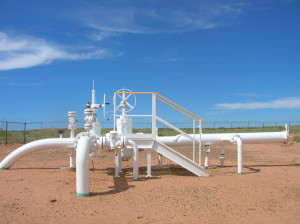*This article is not a substitute for the advice of an attorney.*
Today we continue on with Part 3 in the Eminent Domain Texas series. Click here if you missed Part 1 or Part 2.
Due to the increase in Texas oil production over the past few years, the number of pipelines necessary to transport product has greatly increased and resulted in oil and gas pipeline companies seeking easements from landowners. As of November 2012, there are 366,274 miles of pipelines crisscrossing the state of Texas. As oil production continues to increase and new pipeline projects are built, eminent domain issues are popping up for landowners across the state. A single pipeline project can result in multiple condemnation proceedings against different landowners. For example, the TransCanada Keystone XL pipeline, the last leg of which will run from Cushing, OK to Port Arthur, Texas, resulted in the filing of over 80 condemnation suits.
In light of the increasing number of pipeline projects across Texas, this blog will focus on eminent domain as it relates to common carrier pipelines. (Please note that there are other types of pipeline companies that may have eminent domain power, such as gas utilities, that do not have to qualify as a common carrier in order to exercise the power.)
Pipelines and Eminent Domain
What is a common carrier? Eminent domain is available to pipeline companies that are deemed “common carriers.” A common carrier is defined by statute, Texas Natural Resources Code Sections 111.002, 111.003, and 111.0013. Basically, these statutes provide that a pipeline company is a common carrier if it owns or operates a pipeline that transports crude oil, coal, carbon dioxide or hydrogen for hire, or transports crude oil purchased from others. Natural gas pipelines, although not governed by the same statutes as crude oil pipelines, are also considered common carriers if they transport natural gas for hire. Pipelines that transport only their own product are not considered common carriers.
Who determines common carrier status? The pipeline company is required to file a form with the Texas Railroad Commission, the state agency in charge of regulating oil and gas production. The T-4 Form requires the company to declare whether it is a common carrier by checking a box that it is either a common carrier or a private line, and by answering whether it will carry only the gas and/or liquids produced by the pipeline owner or operator. The Railroad Commission is not authorized to investigating this status, meaning that the representation of the company on the form is taken at face value. Thus, the determination of common carrier status is essentially made by the pipeline.
Landowners, however, are not without recourse and may challenge the pipeline company’s designation as a common carrier. Once a landowner challenges a pipeline’s common carrier status, the pipeline bears the burden of proving that it is, in fact, a common carrier in order to exercise the power of eminent domain. For example, the Texas Supreme Court in Texas Rice Land Partners, Ltd v. Denbury Green Pipeline-Texas, LLC, held that a landowner may challenge an eminent domain proceeding in court on grounds that a CO2 pipeline company is not a common carrier. The court found that a pipeline is not irrefutably considered a common carrier merely by declaring it so on the T-4 form. It is important to note, however, that this decision was limited to CO2 pipelines and it remains to be seen whether the Texas Supreme Court will expand its interpretation to oil and gas pipelines as well. [Read opinion here.]
Although two bills in the 2013 Texas Legislature sought to modify the common carrier designation process–one supported by landowner groups and another supported by the oil and gas industry–neither bill was successful. To read more about these bills, click here.
What can be condemned by a pipeline company? Pipeline companies may condemn land, rights-of-way, easements, and property that is necessary to build and operate common carrier pipelines.
What is adequate compensation? As has been explained in more detail in the prior posts in this series, adequate compensation is the market value of the property being taken, at the time the taking occurs. Adequate compensation may also include payment of damages if the value of a landowner’s remaining property is diminished due to the condemnation.












